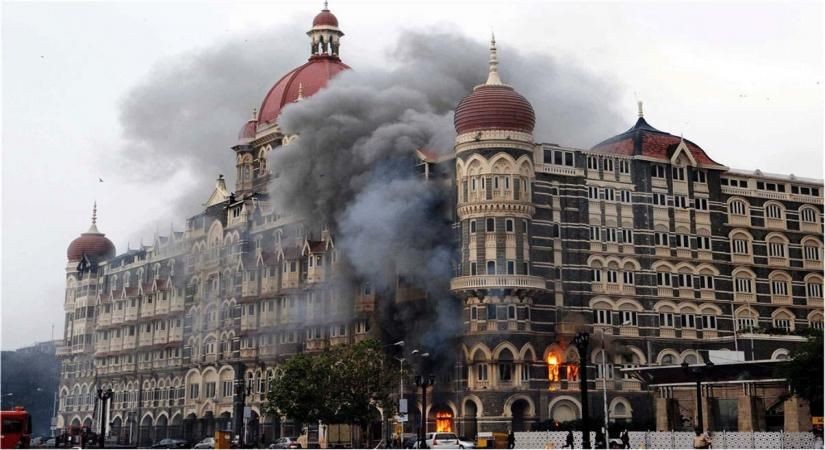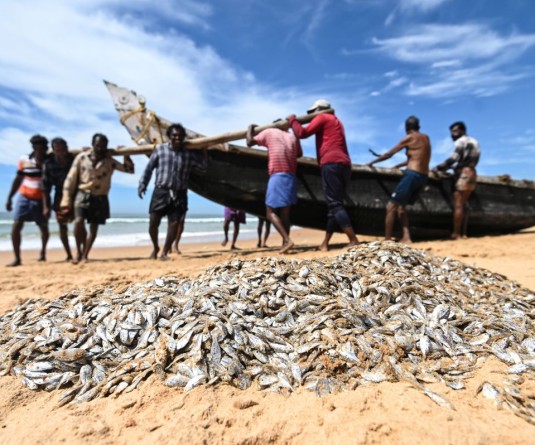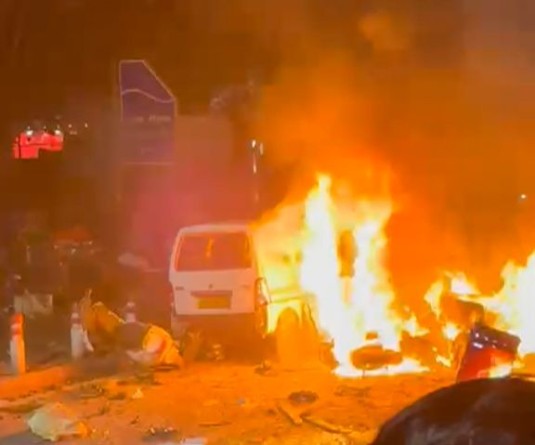IANS Photo

New Delhi, November 25 (IANS) The Taj Palace’s dome silhouetted against a night sky shrouded in flames and smoke became one of the defining visuals of that November night, 17 years ago, which marked a new chapter in terror and the Indian citizens’ resilient fightback.
This iconic hotel in Mumbai commands a regal view of the Gateway of India and the Arabian Sea, but between November 26 and 28, 2008, it witnessed within itself the brutal picture of inhumanity.
The luxury hotels, Taj Palace and nearby Trident, both owned by the Oberoi group, were under attack among the other targets that night, with terrorists indiscriminately firing at guests and staff in the latter’s lobby, bar, and back-of-the-house area.
At the Taj later, they opened fire at guests having a meal at Tiffin, a popular, informal, contemporary restaurant. Many of the casualties occurred here.
The Kandahar restaurant on the floor above was targeted next. They lobbed grenades, even as fires broke out, while many guests, including foreigners, were trapped inside. Hostage situations began to unfold.
It was the dedication, grit, and determination of the staff, who go through regular fire drills and are familiar with all the exits, with those like the then head chef Hemant Oberoi in the lead, who were able to save the lives of at least 200 guests.
Also in view was the heroics of the security forces and commandos who entered the hotel and guided most hostages to safety. The attack at the Oberoi properties was preceded by two terrorists opening fire inside the Chhatrapati Shivaji Maharaj Terminus (CST), one of the city’s busiest railway stations. The gunfire killed over 58 people and injured 104.
The attackers escaped the scene by blending into the crowd. This was followed by reports of attacks at the two hotels, the Cama and Albless Hospital at Fort, the Leopold Café in Colaba, while bombs placed in taxis at Wadibunder and Vile Parle ripped through the two areas.
All the terrorists were eliminated, except Ajmal Kasab, who was apprehended; later hanged till death after a long, legal process.
The final toll: 166 killed, 300 plus injured.
The night wept, and in many areas in Mumbai, the black asphalted roads were red with blood; it included that of martyrs who put duty before self. Those who gave up their lives trying to save others in the line of duty included police officers Hemant Karkare, Ashok Kamte, and Vijay Salaskar outside the Cama Hospital.
A wick of humanity lit bright that night at Nariman House Chabad centre, where Sandra Samuel, an Indian nanny, carried two‑year‑old Moshe Holtzberg to safety during the 26/11 terrorist attacks.
Two terrorists attacked the Jewish outreach where Rabbi Gavriel Holtzberg and his wife Rivka, along with others, were taken hostage.
Sandra acted immediately to pick up Moshe and leave the building while the siege was still unfolding, thus moving him away from the immediate danger and ensuring he was not left alone amid the violence.
Despite the terror and confusion around her, she focused on comforting and carrying the toddler, preventing him from being separated or harmed during the escape.
When rescuers later entered Nariman House, they found that Rabbi Gavriel and Rivky had been killed. Moshe’s survival was widely attributed to Sandra’s quick and courageous actions. She shielded and cared for him until he could be reunited with his family and later relocated with her ward to Israel.
In the aftermath of the attack, sponsored and abetted by Pakistan, even as the country remembers the heroes and the fallen, it is time to recollect the lines from the posters that read, “Never forget; Never forgive.”






